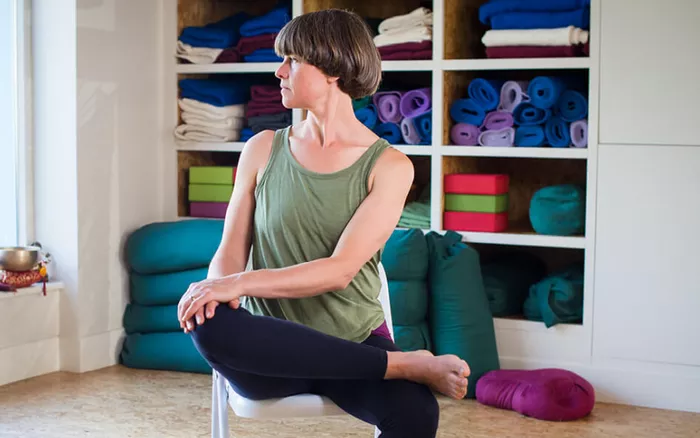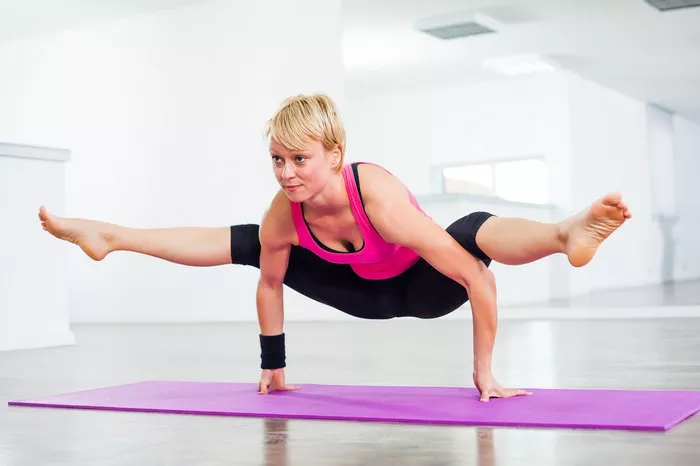Yoga is more than just a form of physical exercise; it is a way of life that promotes harmony, mindfulness, and holistic well-being. For those of us who have practiced yoga for years, the importance of maintaining a clean and hygienic environment is second nature. A clean yoga mat not only supports better hygiene but also extends the life of the mat and improves our overall experience.
In recent years, natural cleaning solutions have gained popularity, and vinegar is often hailed as a go-to option due to its disinfectant properties. But is vinegar actually safe for cleaning yoga mats? In this article, we’ll explore this question from multiple angles, combining practical experience with scientific insights to help you make an informed decision.
The Chemistry of Vinegar: What Makes It a Popular Cleaner?
White distilled vinegar is a weak acetic acid solution, typically containing about 5% acetic acid and 95% water. This mild acidity gives it antimicrobial properties, making it effective against many types of bacteria, viruses, and fungi. It is biodegradable, non-toxic, and affordable—attributes that make it attractive to people looking for eco-friendly cleaning alternatives.
When applied to non-porous surfaces like kitchen counters or glass, vinegar can be an excellent cleaner. However, yoga mats are a different story altogether. They are made from a variety of materials, each with its own chemical composition and tolerance levels to acidic substances.
Types of Yoga Mats and Their Reactions to Vinegar
Yoga mats are not all created equal. Understanding the material of your mat is essential before choosing any cleaning method, especially one involving vinegar. Here are some common types of mats and how vinegar affects them:
PVC (Polyvinyl Chloride) Mats
PVC mats are some of the most widely used due to their affordability and durability. They are relatively resistant to acidic substances, but prolonged or frequent exposure to vinegar can degrade the plasticizers that keep the mat flexible. Over time, this may cause the mat to become brittle or lose its grip.
TPE (Thermoplastic Elastomer) Mats
TPE mats are considered a more environmentally friendly alternative to PVC. They are less tolerant of acidic cleaners. Using undiluted vinegar on a TPE mat can cause surface degradation, fading, or changes in texture. Always dilute vinegar if you choose to use it on this type of mat.
Natural Rubber Mats
Natural rubber mats like those from Manduka or Liforme are popular among seasoned practitioners. These mats are more porous and sensitive to acidic substances. Vinegar can weaken the rubber, cause discoloration, and affect the mat’s natural grip. It’s generally not advisable to use vinegar-based cleaners on natural rubber unless specifically approved by the manufacturer.
Cork Mats
Cork mats naturally resist microbial growth, so they often require less frequent deep cleaning. While vinegar might not severely damage cork, repeated use can erode the protective layer on the mat’s surface, reducing its lifespan.
Jute Mats
Jute mats are made from natural plant fibers woven into a supportive backing. They are quite absorbent, and using vinegar can lead to persistent odor and moisture retention. These mats should be cleaned using minimal liquid and very gentle cleansers.
Manufacturer Guidelines: Always Read the Label
Many yoga mat manufacturers provide specific cleaning instructions based on the material composition of their mats. Ignoring these guidelines can void warranties or result in irreparable damage. For instance, Manduka explicitly warns against using vinegar on their PRO series mats, while JadeYoga recommends avoiding alcohol and vinegar for their natural rubber mats.
If your mat did not come with cleaning guidelines or if you have lost them, visit the manufacturer’s website. Alternatively, test a small, inconspicuous area with a diluted vinegar solution before committing to a full cleaning.
The Pros and Cons of Using Vinegar on Yoga Mats
To make an informed choice, it’s helpful to consider both the advantages and potential drawbacks of using vinegar:
Pros:
- Antimicrobial Properties: Vinegar effectively neutralizes many bacteria and fungi.
- Eco-Friendly: It is biodegradable and free from harsh chemicals.
- Inexpensive: Vinegar is widely available and affordable.
- Natural Deodorizer: Helps eliminate mild odors from sweat and use.
Cons:
- Material Sensitivity: Can degrade or damage certain types of yoga mats.
- Residual Odor: The strong smell of vinegar may linger, especially on absorbent materials.
- Discoloration Risk: Especially on natural rubber and dyed surfaces.
- Reduced Grip: Altering the surface texture can lead to reduced traction during practice.
Safe Ways to Use Vinegar on Your Yoga Mat
If you still prefer using vinegar for its natural properties, consider these precautions to minimize potential damage:
1. Always Dilute
Mix a solution of one part vinegar to three parts water. This reduces the acidity and makes it less likely to cause harm. Optionally, add a few drops of essential oils like lavender or tea tree for added antimicrobial action and a more pleasant aroma.
2. Spot Test First
Apply the solution to a small, hidden section of the mat and wait a few hours. Check for any changes in color, texture, or smell. If there are no adverse effects, proceed with cleaning the rest of the mat.
3. Use a Soft Cloth or Sponge
Avoid abrasive scrubbing tools. Gently wipe the mat using a soft cloth dampened with the diluted solution. Do not soak the mat or allow liquid to pool.
4. Rinse and Air Dry
After cleaning with vinegar, wipe down the mat with plain water to remove any acidic residue. Hang the mat to dry in a shaded, well-ventilated area. Avoid direct sunlight, which can cause materials like rubber or TPE to degrade.
Alternative Cleaning Methods
If you’re unsure about using vinegar, there are several alternative ways to clean your mat safely:
Commercial Yoga Mat Cleaners
Many brands offer mat-specific cleaners that are tested for material compatibility. These often include natural ingredients and are pH-balanced.
DIY Gentle Cleanser
Create a simple cleaning spray using water, a few drops of mild liquid soap (like castile soap), and optional essential oils. This mixture is generally safe for most types of mats.
Steam Cleaning
For mats that tolerate heat and moisture, a handheld steamer can provide a deep clean without chemicals. Always check manufacturer guidance before trying this method.
How Often Should You Clean Your Yoga Mat?
Cleaning frequency depends on usage and environment. Here’s a general guideline:
- Daily Practitioners: Wipe down after each session and deep clean weekly.
- Occasional Practitioners: Clean after every few uses and deep clean monthly.
- Hot Yoga Practitioners: Clean after every use due to excessive sweat and moisture.
Regular maintenance prevents the buildup of bacteria and odor, enhancing your experience and mat longevity.
Conclusion
The answer is not a simple yes or no. Vinegar can be a safe and effective cleaner for certain types of yoga mats if used correctly and in moderation. However, its acidic nature makes it unsuitable for others, particularly natural rubber, cork, and jute mats.
As a long-time yoga instructor, I always emphasize the importance of respecting your equipment as part of your practice. Understanding your mat’s material, following manufacturer recommendations, and using gentle, appropriate cleaning methods can help you maintain a clean and inviting space for your yoga journey.
If you’re ever in doubt, err on the side of caution and opt for milder alternatives or consult your mat’s manufacturer. A well-maintained mat not only supports your physical practice but also deepens your connection to the mindful discipline of yoga itself.
Related Topics:

















